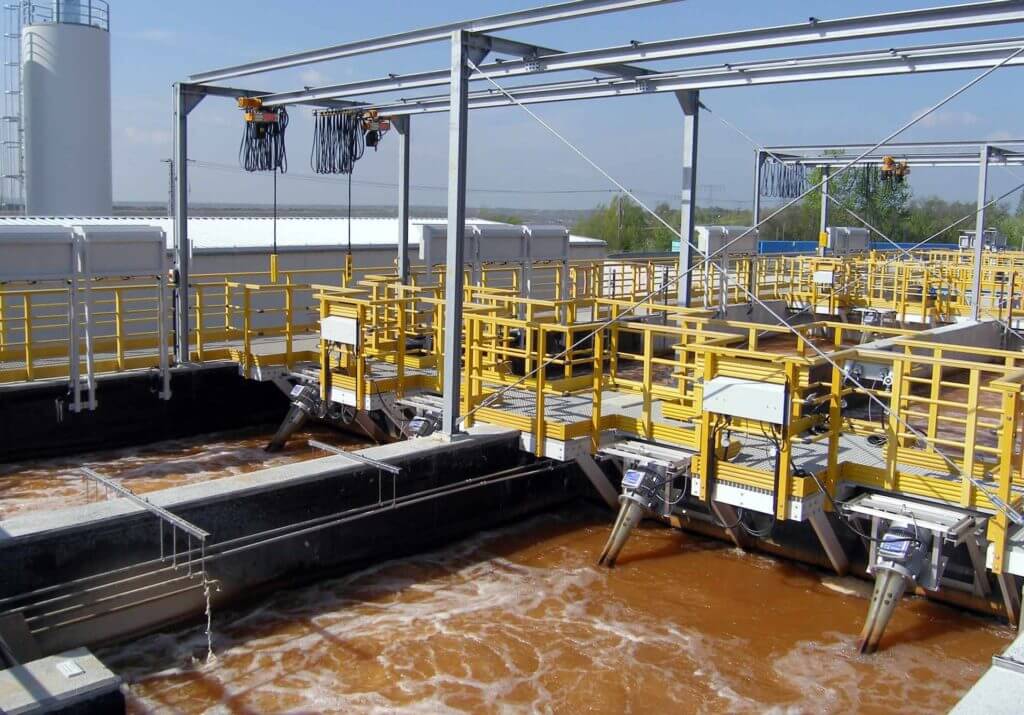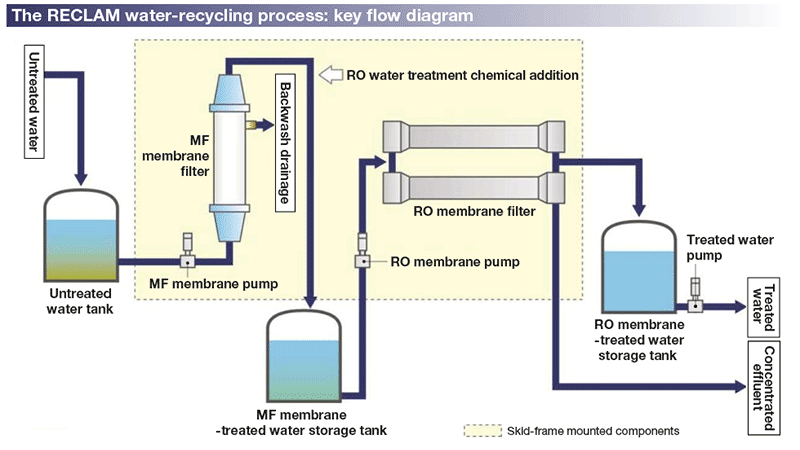Industrial Waste Water Treatment-- Comprehensive Solutions for Wastewater Disposal
Industrial Waste Water Treatment-- Comprehensive Solutions for Wastewater Disposal
Blog Article
Key Strategies in Industrial Waste Water Treatment Procedures
The treatment of industrial wastewater is a crucial aspect of environmental administration, including a variety of methods developed to minimize the influence of impurities. From the basic physical approaches that separate solids to the advanced chemical and biological processes that target details pollutants, each technique plays a crucial duty in accomplishing water quality requirements. Furthermore, innovations in technologies such as membrane filtration and advanced oxidation procedures use cutting-edge options for improving therapy efficacy. Recognizing exactly how these methods interconnect and their ramifications for sustainability elevates important inquiries regarding the future of wastewater monitoring in market.
Physical Therapy Techniques
Just how successfully can physical treatment approaches resolve the intricacies of commercial wastewater? Physical therapy methods play an essential duty in the initial phases of wastewater monitoring, focusing mostly on the removal of solids and huge particulates. Strategies such as flotation, purification, and sedimentation are important for reducing the focus of suspended solids, thereby boosting the effectiveness of succeeding therapy processes.
Sedimentation involves the gravitational settling of solids, allowing for the separation of larger materials from the wastewater. This technique is specifically effective in clearing up water prior to organic or chemical treatments.
In addition, flotation methods, which make use of air bubbles to lift suspended solids to the surface for elimination, work in treating wastewater with high focus of fats, oils, and oils. In general, physical treatment approaches act as an essential primary step in the detailed monitoring of commercial wastewater, guaranteeing that the lots on subsequent treatment phases is lessened and enhancing general therapy efficiency.
Chemical Therapy Techniques
While physical treatment techniques lay the foundation for efficient wastewater management, chemical therapy techniques are vital for dealing with the a lot more complicated pollutants typically found in commercial effluents. These methods use different chemical agents to speed up, counteract, or oxidize harmful materials, making certain an extra detailed elimination of pollutants.
One common technique is coagulation and flocculation, where chemical coagulants such as aluminum sulfate or ferric chloride are included in promote the gathering of suspended particles. This process boosts solid-liquid separation, decreasing turbidity and enhancing water top quality. Additionally, neutralization procedures are used to adjust the pH of wastewater, making use of acids or bases to reduce the effects of acidic or alkaline streams, specifically.
Oxidation-reduction responses play a critical role in derogatory natural contaminants and pathogens. Chemical oxidants like ozone, hydrogen, or chlorine peroxide are used to break down complex natural compounds, making them much less dangerous or extra naturally degradable. Furthermore, advanced oxidation procedures (AOPs) combine several oxidation strategies to improve toxin elimination efficiency.
Organic Therapy Procedures
The performance of wastewater treatment is significantly enhanced by organic treatment procedures, which harness the natural metabolic tasks of microbes to decay raw material and eliminate pollutants. Industrial Waste Water Treatment. These procedures largely involve cardio and anaerobic food digestion, each tailored for specific kinds of wastewater
Aerobic treatment procedures utilize oxygen to sustain microbial development, advertising the malfunction of natural toxins right into co2 and water. Usual approaches include turned on sludge systems, where oygenation storage tanks help with the mixing of wastewater with microbes, and flowing filters, which encourage their explanation biofilm advancement on media surfaces.
On the other hand, anaerobic therapy processes take place in the absence of oxygen, utilizing anaerobic bacteria to decompose organic matter, resulting in biogas manufacturing, a renewable resource resource. Anaerobic digesters are frequently employed in commercial setups for this objective, successfully reducing the volume of sludge while generating useful biogas.
The option of a biological over here treatment approach relies on wastewater features, therapy objectives, and governing criteria. The combination of organic procedures in wastewater therapy not only boosts pollutant removal efficiency but likewise advertises sustainability by lessening chemical usage and supporting resource recuperation.
Advanced Oxidation Processes

Common AOP methods consist of Fenton's reagent, photocatalysis, and ozonation. Fenton's reagent, a mix of hydrogen peroxide and ferrous iron, catalyzes the development of hydroxyl radicals, making it effective for dealing with wastewater having phenolic compounds and other stubborn compounds.
AOPs use a number of benefits, including minimized sludge manufacturing and the ability to treat wastewater with high concentrations of organic contaminants. The application of AOPs needs careful consideration of operational parameters and cost-effectiveness, making sure that these advanced strategies are appropriately integrated right into existing wastewater treatment systems.
Membrane Layer Purification Technologies

Microfiltration works for removing suspended microorganisms and solids, while ultrafiltration targets smaller organic particles and viruses. Nanofiltration bridges the void between ultrafiltration and turn around osmosis, effectively removing organic substances and divalent ions. Reverse osmosis supplies the greatest level of visit their website filtration, made use of largely for desalination and getting rid of mono-valent ions.
Membrane modern technologies offer numerous benefits, consisting of reduced energy intake compared to conventional therapy approaches, modular design for scalability, and the capacity for water healing and reuse. However, obstacles such as membrane layer fouling and the requirement for routine maintenance have to be addressed to make certain system efficiency. Generally, membrane filtering modern technologies stand for an essential part of modern commercial wastewater therapy techniques, advertising sustainability and resource preservation in water monitoring.
Conclusion
In conclusion, industrial wastewater therapy uses a diverse selection of strategies, including physical, chemical, biological, and progressed approaches. Each method plays a crucial role in effectively addressing numerous contaminants, boosting water quality, and promoting resource sustainability. The integration of these techniques fosters an extensive therapy strategy, guaranteeing that commercial effluents fulfill regulatory requirements while lessening environmental influence. Continued improvements in these methods will certainly further enhance the efficiency and effectiveness of wastewater treatment procedures in industrial setups.
The treatment of commercial wastewater is a vital aspect of environmental monitoring, including a variety of methods created to minimize the effect of contaminants.How effectively can physical treatment methods attend to the complexities of commercial wastewater?Advanced oxidation procedures (AOPs) stand for an innovative method in industrial wastewater therapy, designed to successfully break down organic toxins that are usually resistant to traditional therapy techniques (Industrial Waste Water Treatment).In conclusion, commercial wastewater treatment employs a diverse selection of strategies, including physical, chemical, biological, and advanced approaches. Continued innovations in these methodologies will certainly further boost the effectiveness and effectiveness of wastewater treatment procedures in industrial setups
Report this page